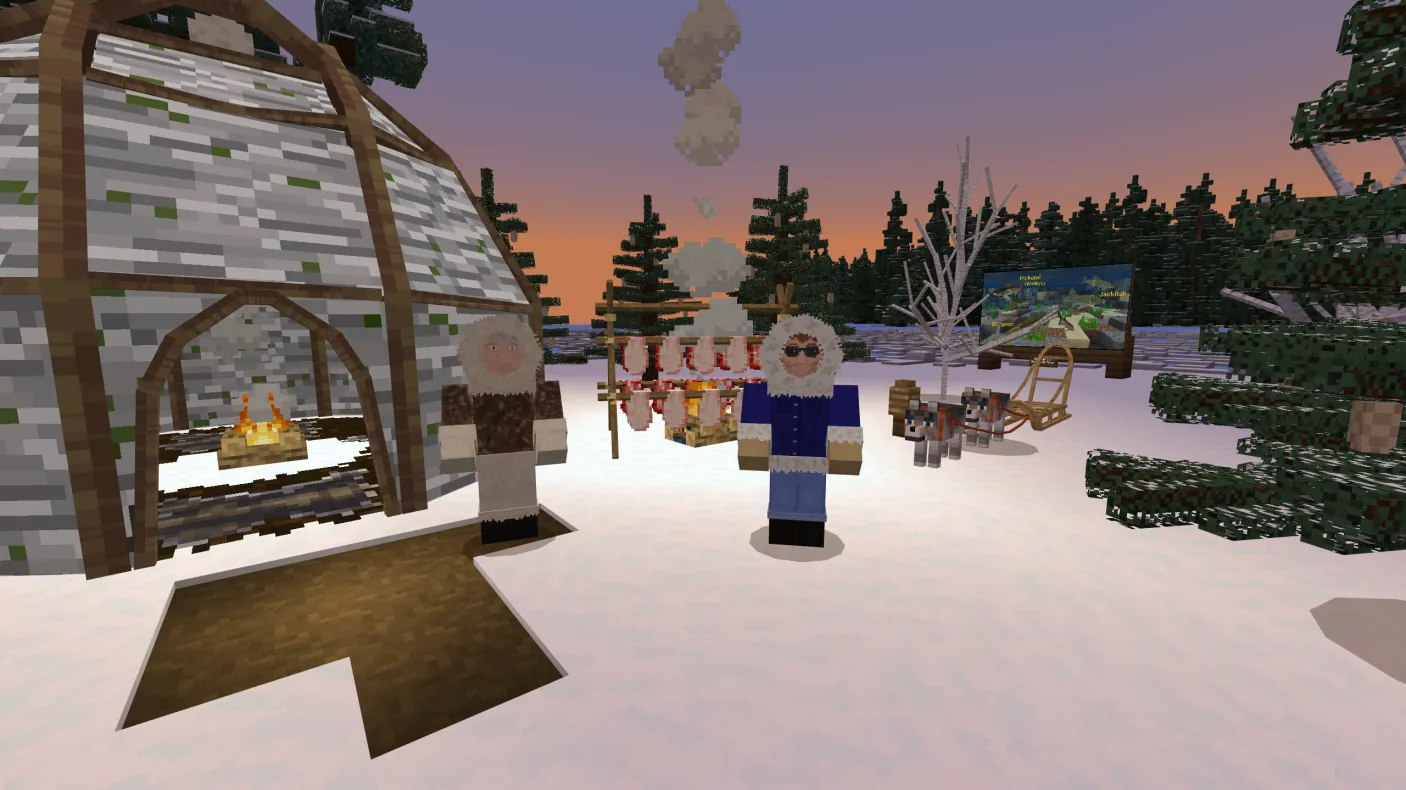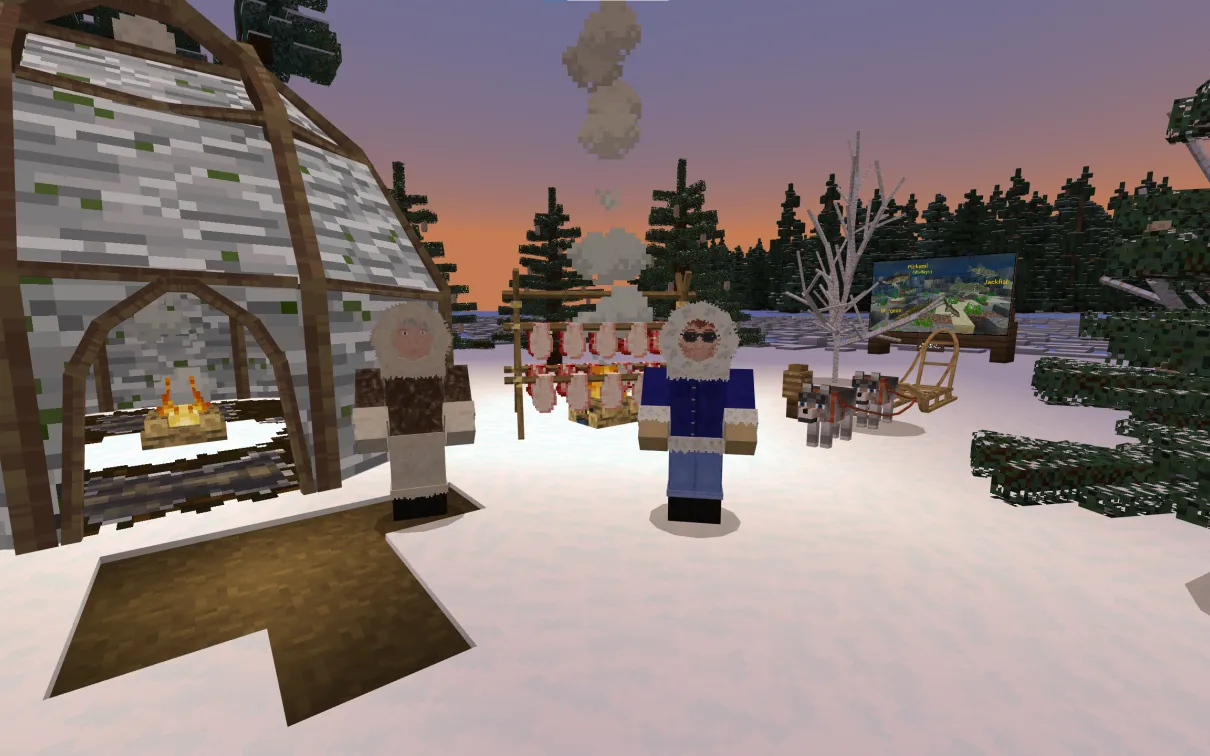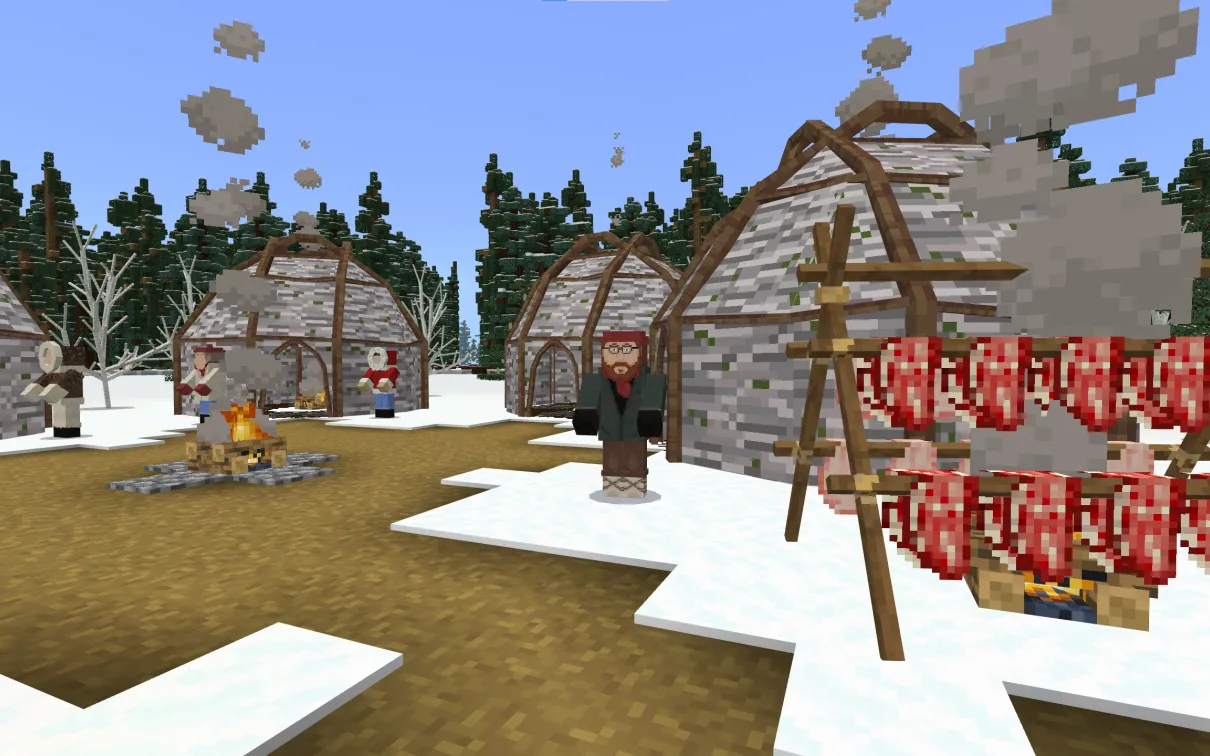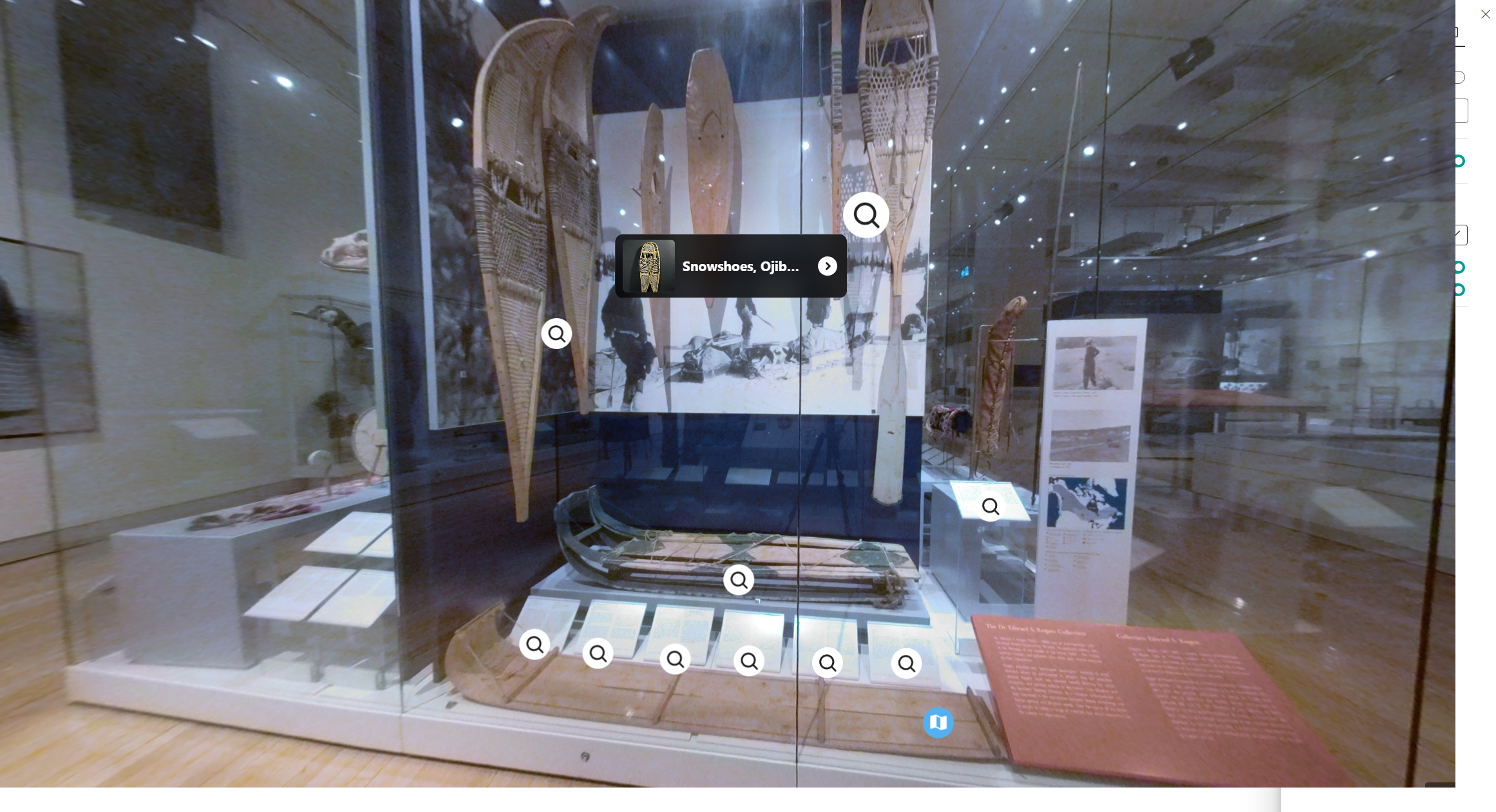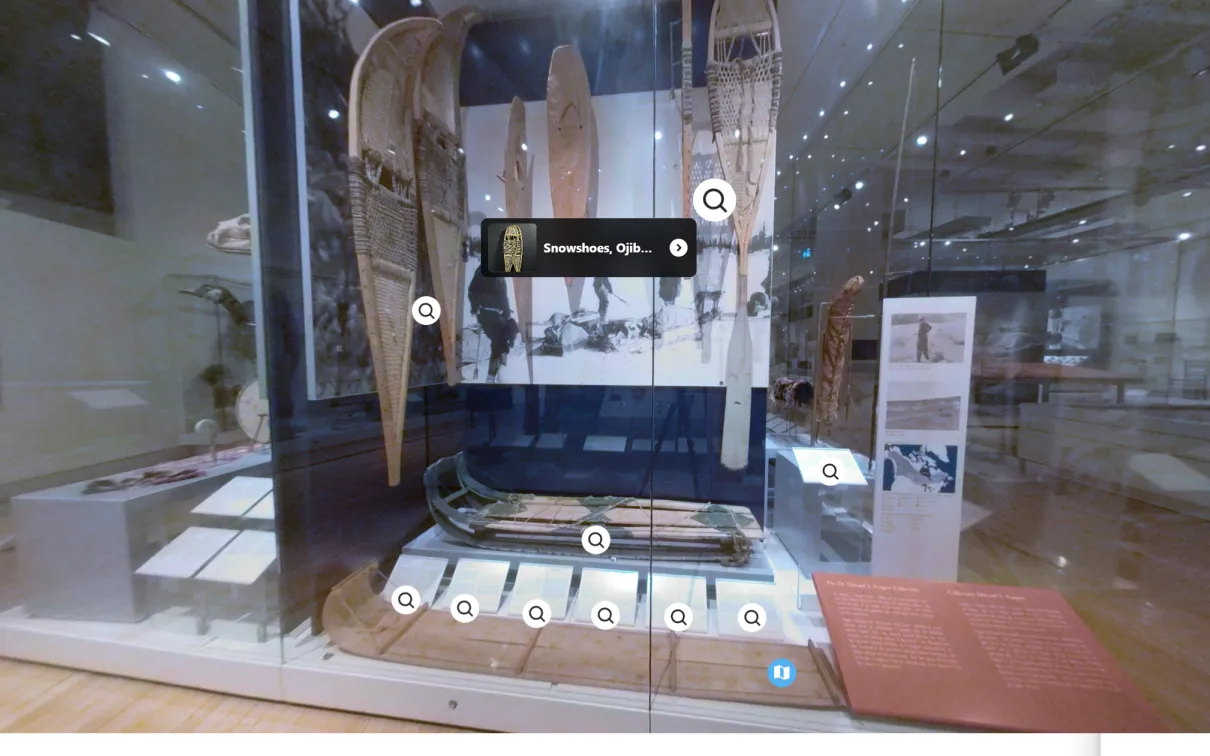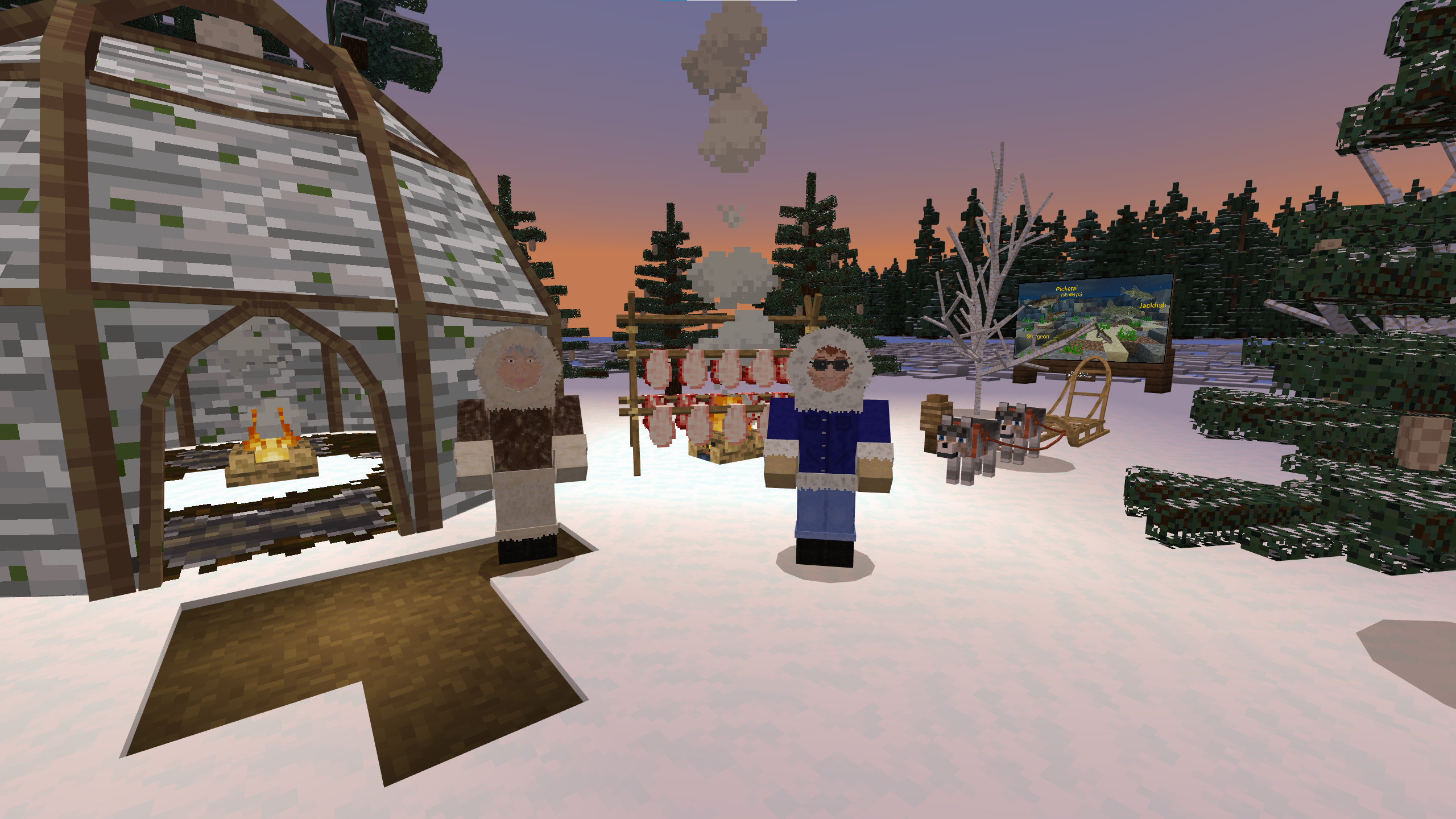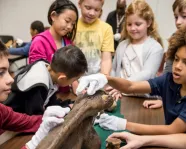Pimachiowin Aki - January Monthly Museum Minecraft
Category
Duration
Audience
Age
Grades
Subjects
About this lesson
Travel to the Miskwewesibi campsite on Pimachiowin Aki, “The Land that Gives Life,” and join the Anishinaabe community to learn how to live in a winter forest.
Take students on a journey using power of Minecraft to explore the winter campsite of an Anishinaabe community in Pimachiowin Aki, “The Land that Gives Life.” Situated on Miskwewesibi, also known as the Bloodvein River, this campsite lies at the heart of the snowy Boreal Forest.
Students will meet in-game versions of real Elders and Knowledge Carriers in the community, who welcome the player as a guest. Under their guidance, students will learn traditional activities that have been practiced from time immemorial to today, which will help the community survive the cold winter days and nights.
Throughout the lesson, an Indigenous Museum Educator will make connections between objects and belongings encountered in the game with their real-world counterparts represented in the collections that reside at ROM.
Whether dogsledding, trapping, ice fishing, or bow hunting, students will learn about the responsibility we all have to care for the land and use it sustainably, taking only what is needed and giving back to the forest. Through these activities, students may begin to understand the spiritual and cultural importance of the land to some Anishinaabe and other Indigenous Peoples.
Please note: Minecraft is rated E10+ (Everyone 10+). While the Minecraft game environment does not include depictions of blood, this lesson does include activities in which students will use tools and weapons to hunt and kill in-game rabbits, fish, and moose for their meat and hides.
| Delivery Language | This lesson is currently offered in English only. |
| Activities |
|
| Format | Virtual Lesson |
| Duration | 1 hour |
| Pricing | Free |
| Minimum Group | n/a |
| Maximum Group | Unlimited |
Available Dates
- January 14, 2026 – 9:30 AM
- After the live lesson airs, classes may register to view the recording.
Learning Goals
Understand the relationship with (and responsibility for) the land shared by many Indigenous Peoples.
Explore biodiversity in a boreal forest and understand how plants and animals survive in the winter.
Compare traditional and modern land use practices and how they contribute to sustainability.
Reflect on the cultural and spiritual importance of the land to Anishinaabe and other Indigenous peoples.
French Classes

While the virtual lesson is only offered in English for now, you can follow this tutorial to translate the game language into French.
Dialogue in this Minecraft World will appear in English even if the game settings are set to French, but can be translated with the Immersive Reader as shown in the tutorial above.
Preparation
Preparation:
Students should be comfortable with the basics of Minecraft, including movement and the breaking and placing of blocks. Students should also be familiar with using the camera and book & quill to document learning.
Speak with students beforehand about respectful engagement, including how to ask thoughtful and considerate questions.
Teachers are encouraged to stay engaged and model curiosity and respect throughout the session.
New to Minecraft?
We recommend that students are familiar with the basic Minecraft controls taught in the How to Play tutorials in the Minecraft Lesson Library, particularly:
- How to Play: Movement (Keyboard and Mouse / Touchscreen)
- How to Play: Break and Place (Keyboard and Mouse / Touchscreen)
You can also check out our New to Minecraft section on our Minecraft Program Support site.
Requirements
Class set of devices with Minecraft Education installed.
Minecraft Licenses are not provided by ROM. They must be provided by your school or board, or through the Camps and Clubs program for homeschool or other educators
Supporting Materials
Minecraft 101 for Teachers (How to play) – Register to watch the recorded training
Minecraft Programs 2025-26 Info Session – Recorded Webinar
Curriculum Connections
Social Studies
- Heritage and Identity Early Societies to 1500 CE
- People and Environments: Political and Physical Regions of Canada
Science
- STEM Skills and Connections – Applications, Connections, and Contributions
- Life Systems – Habitats and Communities
Language
- Literacy Connections and Applications
- Comprehension: Understanding and Responding to Texts
Science
- STEM Skills and Connections – Applications, Connections, and Contributions
- Life Systems – Human Health and Body Systems
- Structures and Mechanisms – Forces Acting on Structures
Social Studies
- Heritage and Identity: Interactions of Indigenous Peoples and Europeans prior to 1713, in What Would Eventually Become Canada
- People and Environments: The Role of Government and Responsible Citizenship
Language
- Literacy Connections and Applications
- Comprehension: Understanding and Responding to Texts
Science
- STEM Skills and Connections – Coding and Emerging Technologies
- Life Systems – Biodiversity
Social Studies
- Heritage and Identity: Communities in Canada, Past and Present
Language
- Literacy Connections and Applications
- Comprehension: Understanding and Responding to Texts
Science
- STEM Skills and Connections – Applications, Connections, and Contributions
- Life Systems – interactions in the Environment.
Geography
- Physical Patterns in a Changing World
- Natural Resources Around the World: Use and Sustainability
Language
- Literacy Connections and Applications
- Comprehension: Understanding and Responding to Texts
Science
- STEM Skills and Connections – Applications, Connections, and Contributions
Language
- Literacy Connections and Applications
- Comprehension: Understanding and Responding to Texts
